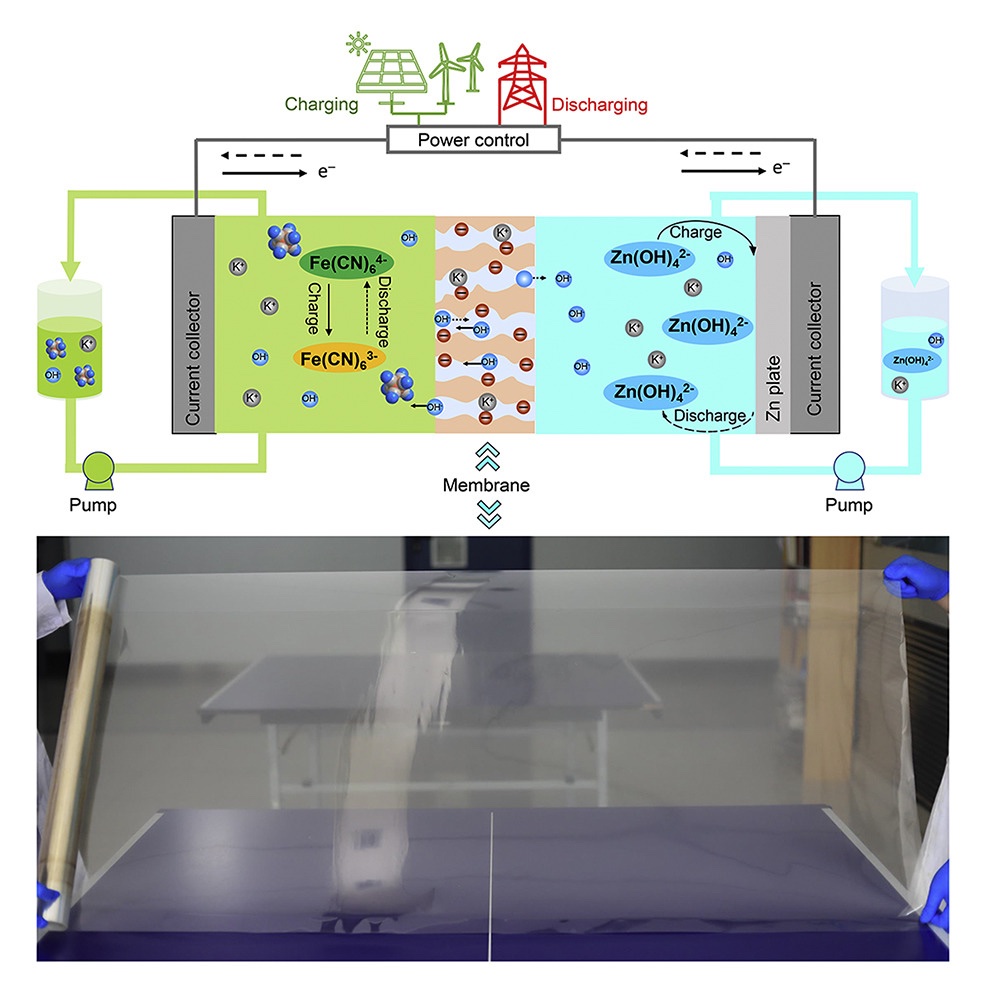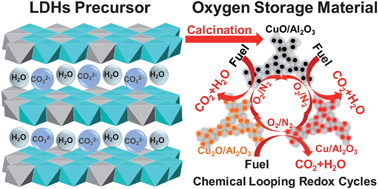2024
Anqi Wang*, Charlotte Breakwell, Fabrizia Foglia, Rui Tan, Louie Lovell, Xiaochu Wei, Toby Wong, Naiqi Meng, Haodong Li, Andrew Seel, Mona Sarter, Keenan Smith, Alberto Alvarez Fernandez, Mate Furedi, Stefan Guldin, Melanie Britton, Neil McKeown, Kim Jelfs, Qilei Song*. Selective ion transport through hydrated micropores in polymer membranes. Nature, accepted.
Dingchang Yang, Yijie Yang , Toby Wong, Sunshine Iguodala , Anqi Wang , Zhiyu Fan, Charlotte Breakwell, Naiqi Meng, Yanlin Wang, Fabrizia Foglia, Daryl Williams, Nilay Shah, Tongwen Xu, Neil McKeown, Magdalena Titirici, Kim Jelfs, Qilei Song*. Microporous ion-sieving membranes for sustainable lithium extraction. Nature Water, under revision.
Toby Wong, Yijie Yang, Rui Tan, Anqi Wang, Zhizhang Yuan, Jiaxi Li, Dezhi Liu, Alberto Alvarez Fernandez, Chunchun Ye, Mark Sankey, David Ainsworth, Stefan Guldin, Fabrizia Foglia, Neil B. McKeown, Kim E. Jelfs*, Xianfeng Li*, Qilei Song*. Microporous polymer membranes enable efficient redox flow batteries for energy storage. Joule, under revision.
Rui Tan, Anqi Wang, Hannah Pilsworth, Mengnan Wang, Irene Bechis, Charlotte Breakwell, Tongchao Liu, Alberto Alvarez Fernandez, Zhiyu Fan, Dezhi Liu, Shengming Zhang, Tomas Juergensen, Mengzheng Ouyang, Stefan Guldin, Wei Li, Thomas Bennett, Kim Jelfs, John Hanna, Anthony K. Cheetham, Qilei Song*. Monolithic semicrystalline metal-organic frameworks with selective ion and molecular transport channels. Nature Communications, under review.
Rui Tan*, Hongzhen He, Anqi Wang, Yilin Yang, Sunshine Iguodala, Chunchun Ye, Dezhi Liu, Zhiyu Fan, Mate Furedi, Guanjie He, Stefan Guldin, Dan J. L. Brett, Neil B. McKeown, Qilei Song*. Interfacial engineering of polymer membranes with intrinsic microporosity for dendrite-free zinc metal batteries. Angew Chem Int Ed. 2024, e202409322. https://doi.org/10.1002/anie.202409322
Christopher G. Cannon, Peter A. A. Klusener, Luke F. Petit, Toby Wong, Anqi Wang, Qilei Song, Nigel P. Brandon, Anthony R. J. Kucernak*. Methylene Blue in a High-Performance Hydrogen-Organic Rechargeable Fuel Cell. ACS Appl. Energy Mater. 2024, 7, 6, 2080–2087. https://doi.org/10.1021/acsaem.3c02515
2023
Rui Tan, Anqi Wang, Chunchun Ye, Jiaxi Li, Dezhi Liu, Barbara Primera Darwich, Luke Petit, Zhiyu Fan, Toby Wong, Alberto Alvarez-Fernandez, Mate Furedi, Stefan Guldin, Charlotte E. Breakwell, Peter A. A. Klusener, Anthony R. Kucernak, Kim E. Jelfs, Neil B. McKeown, Qilei Song. Thin Film Composite Membranes with Regulated Crossover and Water Migration for Long-Life Aqueous Redox Flow Batteries. Advanced Science, 2023. https://doi.org/10.1002/advs.202206888

Anqi Wang, Rui Tan, Dezhi Liu, Jiaxin Lu, Xiaochu Wei, Alberto Alvarez-Fernandez, Chunchun Ye, Charlotte Breakwell, Stefan Guldin, Anthony R. Kucernak, Kim E. Jelfs, Nigel P. Brandon, Neil B. McKeown and Qilei Song*. Ion-selective Microporous Polymer Membranes with Hydrogen-bond and Salt-bridge Networks for Aqueous Organic Redox Flow Batteries. Advanced Materials, 2023, 2210098. Link to full paper: https://doi.org/10.1002/adma.202210098
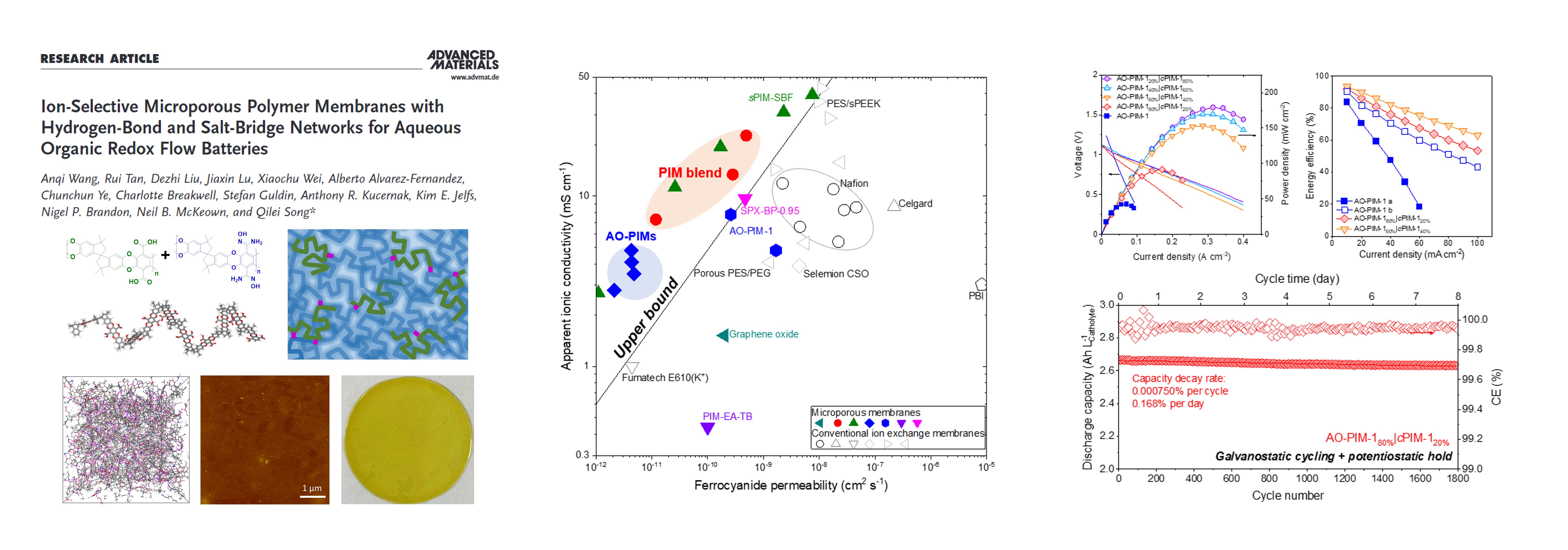
2022
Michael High, Clemens F. Patzschke, Liya Zheng, Dewang Zeng, Oriol Gavalda-Diaz, Nan Ding, Ka Ho Horace Chien, Zili Zhang, George E. Wilson, Andrey V. Berenov, Stephen J. Skinner, Kyra L. Sedransk Campbell, Rui Xiao*, Paul S. Fennell* & Qilei Song*. Precursor engineering of hydrotalcite-derived redox sorbents for reversible and stable thermochemical oxygen storage. Nature Communications 13, 5109 (2022). Link to the paper (open access). Check out the news on Imperial College website.
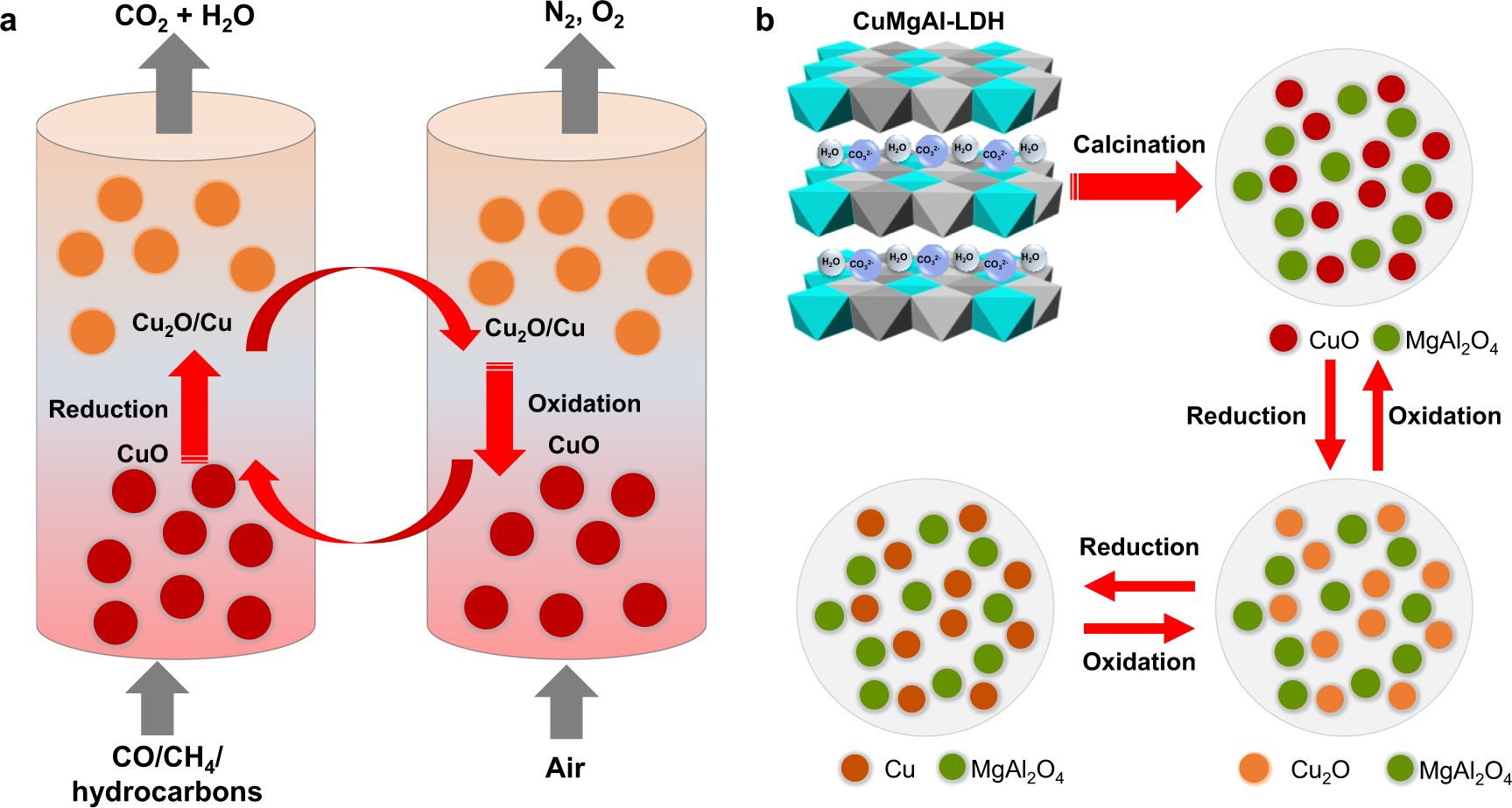 |
|---|
Michael High, Clemens F. Patzschke, Liya Zheng, Dewang Zeng, Rui Xiao, Paul S. Fennell, and Qilei Song*. Hydrotalcite-Derived Copper-Based Oxygen Carrier Materials for Efficient Chemical-Looping Combustion of Solid Fuels with CO2 Capture. Energy & Fuels 2022 36 (18), 11062-11076. Link to the paper (open access).
 |
|---|
Anqi Wang, Rui Tan, Charlotte Breakwell, Xiaochu Wei, Zhiyu Fan, Chunchun Ye, Richard Malpass-Evans, Tao Liu, Martijn A. Zwijnenburg, Kim E. Jelfs, Neil B. McKeown*, Jun Chen, and Qilei Song*. Solution-Processable Redox-Active Polymers of Intrinsic Microporosity for Electrochemical Energy Storage. Journal of the American Chemical Society 2022 144 (37), 17198-17208. Link to the paper (open access). Check out the new release on the Imperial website.

C. Ye, R. Tan, A. Wang, J. Chen, B. Comesaña Gándara, C. Breakwell, A. Alvarez-Fernandez, Z. Fan, J. Weng, C. G. Bezzu, S. Guldin, N. P. Brandon, A. R. Kucernak, K. E. Jelfs, N. B. McKeown*, Q. Song*, Long-Life Aqueous Organic Redox Flow Batteries Enabled by Amidoxime-Functionalized Ion-Selective Polymer Membranes. Angew. Chem. Int. Ed. 2022, 61, e202207580; Angew. Chem. 2022, 134, e202207580. Link to the paper.

Chunchun Ye, Anqi Wang, Charlotte Breakwell, Rui Tan, C. Grazia Bezzu, Elwin Hunter-Sellars, Daryl R. Williams, Nigel P. Brandon, Peter A. A. Klusener, Anthony R. Kucernak, Kim E. Jelfs, Neil B. McKeown* & Qilei Song*. Development of efficient aqueous organic redox flow batteries using ion-sieving sulfonated polymer membranes. Nature Communications, 13, Article number: 3184 (2022). Link to the paper.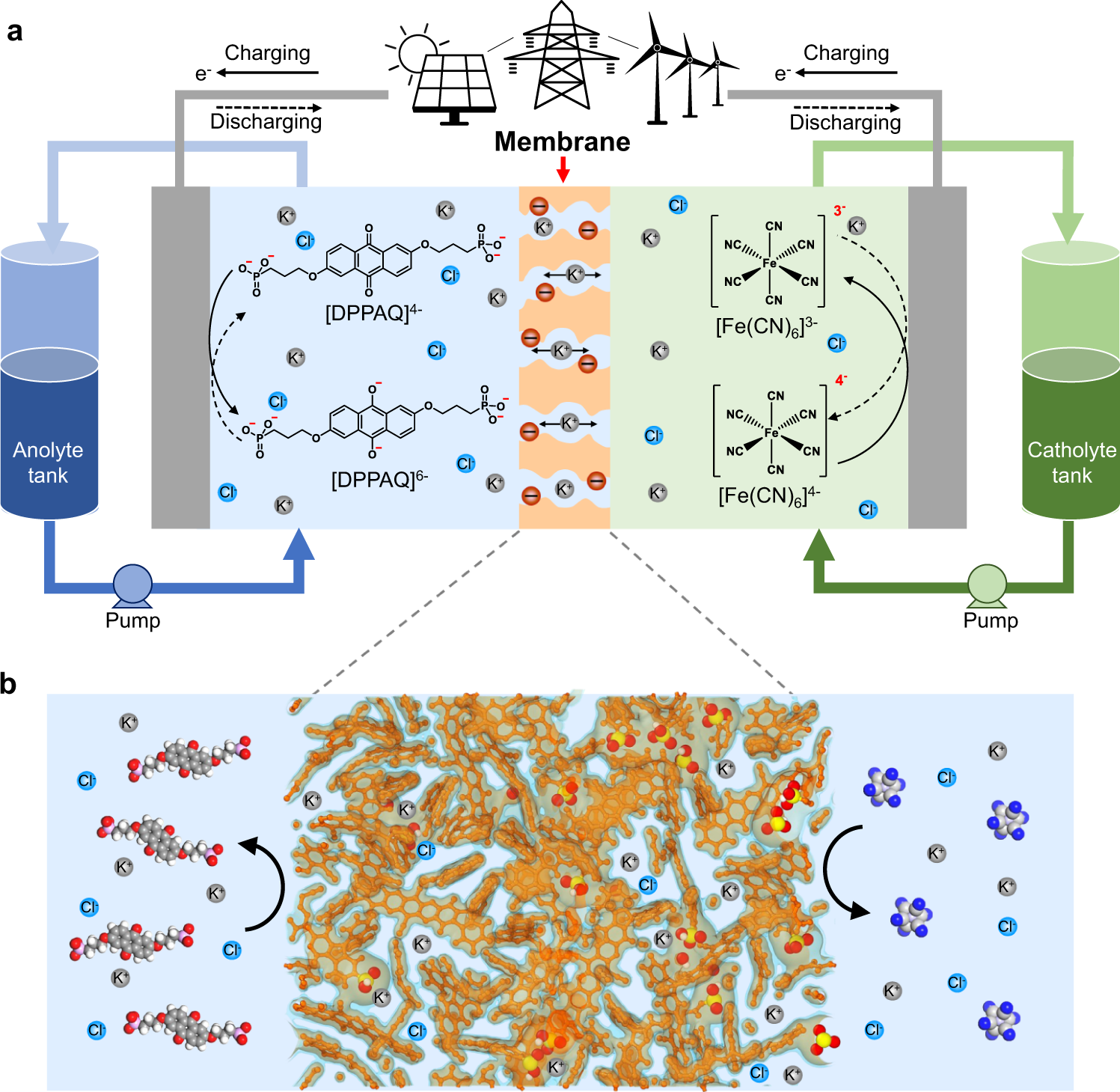
| Ion-selective membranes for aqueous organic redox flow batteries |
Katherine Mizrahi Rodriguez, Wan-Ni Wu, Taliehsadat Alebrahim, Yiming Cao, Benny D Freeman, Daniel Harrigan, Mayank Jhalaria, Adam Kratochvil, Sanat Kumar, Won Hee Lee, Young Moo Lee, Haiqing Lin, Julian M Richardson, Qilei Song, Benjamin Sundell, Raymond Thür, Ivo Vankelecom, Anqi Wang, Lina Wang, Catherine Wiscount, Zachary P Smith. Multi-lab study on the pure-gas permeation of commercial polysulfone (PSf) membranes: Measurement standards and best practices. Journal of Membrane Science. 659, 2022, 120746. Link to the paper. Open access.
Yuhua Xia, Mengzheng Ouyang, Vladimir Yufit, Rui Tan, Anna Regoutz, Anqi Wang, Wenjie Mao, Barun Chakrabarti, Ashkan Kavei, Qilei Song, Anthony R. Kucernak & Nigel P. Brandon. A cost-effective alkaline polysulfide-air redox flow battery enabled by a dual-membrane cell architecture. Nature Communications, 13, 2388, 2022. Link to the paper (open access).

Zhizhang Yuan, Lixin Liang, Qing Dai, Tianyu Li, Qilei Song, Huamin Zhang, Guangjin Hou, and Xianfeng Li*, Low-Cost Hydrocarbon Membrane Enables Commercial-Scale Alkaline-Based Flow Batteries for Long-Duration Energy Storage. Joule, 6, 884-905, 2022. Link to the paper. This paper reports roll-to-roll manufacturing of meter square-sized low-cost membranes and applications in kW-scale flow battery stacks, for long-duration energy storage.
2021
Clemens F. Patzschke, Matthew E.Boot-Handford, Qilei Song, Paul S. Fennell*. Co-precipitated Cu-Mn mixed metal oxides as oxygen carriers for chemical looping processes. Chemical Engineering Journal. 2021, 407, 127093. Link to paper.
2020
Peipei Zuo, Yuanyuan Li, Anqi Wang, Rui Tan, Yahua Liu, Xian Liang, Fangmeng Sheng, Gonggeng Tang, Liang Ge, Liang Wu, Qilei Song*, Neil B McKeown*, Zhengjin Yang*, Tongwen Xu*. Sulfonated microporous polymer membranes with fast and selective ion transport for electrochemical energy conversion and storage. Angewandte Chemie International Edition. 2020, 59, 9564. https://doi.org/10.1002/anie.202000012

Evan Wenbo Zhao, Tao Liu, Erlendur Jónsson, Jeongjae Lee, Israel Temprano, Rajesh B. Jethwa, Anqi Wang, Holly Smith, Javier Carretero-González, Qilei Song & Clare P. Grey*. In situ NMR metrology reveals reaction mechanisms in redox flow batteries. Nature 579, 224–228(2020).
Link to the paper: https://doi.org/10.1038/s41586-020-2081-7

Rui Tan+, Anqi Wang+, Richard Malpass-Evans, Rhodri Williams, Evan Wenbo Zhao, Tao Liu, Chunchun Ye, Xiaoqun Zhou, Barbara Primera Darwich, Zhiyu Fan, Lukas Turcani, Edward Jackson, Linjiang Chen, Samantha Y. Chong, Tao Li, Kim E. Jelfs, Andrew I. Cooper, Nigel P. Brandon, Clare P. Grey, Neil B. McKeown*, and Qilei Song*. Hydrophilic microporous membranes for selective ion separation and flow-battery energy storage. Nature Materials, 19, 195–202(2020). doi:10.1038/s41563-019-0536-8. (+contributed equally).
- Press release by Imperial College: New membrane technology to boost water purification and energy storage
- Media coverage: Phys.Org Evening Standard

2019
Edward Jackson, Marcin Miklitz, Qilei Song, Gareth A. Tribello, and Kim E. Jelfs. A Computational Evaluation of the Diffusion Mechanisms for C8 Aromatics in Porous Organic Cages. J. Phys. Chem. C, 2019, 123, 34, 21011-21021. https://doi.org/10.1021/acs.jpcc.9b05953

2018
Baaden M, Barboiu M, Bill RM, , 2018, Biomimetic water channels: general discussion., Faraday Discuss, Vol: 209, Pages: 205-229.
Baaden M, Barboiu M, Borthakur MP, , 2018, Applications to water transport systems: general discussion., Faraday Discuss, Vol: 209, Pages: 389-414.
Baaden M, Borthakur MP, Casanova S, , 2018, The modelling and enhancement of water hydrodynamics: general discussion., Faraday Discuss, Vol: 209, Pages: 273-285.
Madrid, E, Lowe, J, Msayib, KJ, Mckeown, NB, Song, Q, Attard, GA, Duren, T & Marken, F. Triphasic Nature of Polymers of Intrinsic Microporosity (PIM-1 and PIM-PY) Induces Storage and Catalysis Effects in Hydrogen and Oxygen Reactivity at Electrode Surfaces. ChemElectroChem. 2018, DOI: 10.1002/celc.201800177.
2017
Ghalei B, Sakurai K, Kinoshita Y, , Enhanced selectivity in mixed matrix membranes for CO2 capture through efficient dispersion of amine-functionalised MOF nanoparticles, Nature Energy. volume 2, Article number: 17086 (2017). Doi: http://dx.doi.org/10.1038/nenergy.2017.86

Shan Jiang, Qilei Song,* Alan Massey, Samantha Y. Chong, Linjiang Chen, Shijing Sun, Tom Hasell,* Rasmita Raval, Easan Sivaniah, Anthony K. Cheetham, Andrew I. Cooper*, Oriented 2D Porous Organic Cage Crystals, Angew. chem. Int. Ed., 2017, 56, 9391. Doi: http://dx.doi.org/10.1002/anie.201704579

2016
Y. Rong, Q. Song, K. Mathwig, E. Madrid, D. He, R. G. Niemann, P. J. Cameron, S. EC Dale, S. Bending, M. Carta, R. Malpass-Evans, N. B. McKeown, F. Marken. pH-induced reversal of ionic diode polarity in 300nm thin membranes based on a polymer of intrinsic microporosity. Electrochemistry Communications, 2016, 69, 41-45.

Maria Jimenez-Solomon+, Qilei Song+, Kim Jelfs, Marta Munoz-Ibanez, Andrew Livingston*. Polymer nanofilms with enhanced microporosity by interfacial polymerization. Nature Materials. 2016. 15, 760-767. Doi:10.1038/nmat4638. (+Contributed equally).
- Press release by Imperial College: Researchers develop "designer" chemical separation membranes
- Media coverage: ScienceDaily | Phys.Org | Materials Today
- Highlight: Polymer Membranes: Contorted Separation by Prof. Neil McKeown at University of Edinburgh.
- Introduction by Prof. Andrew Livingston
- Highlight in IChemE's ChemEngBlog

Q. Song, S. Jiang, T. Hasell, M. Liu, S. Sun, A.K. Cheetham, E. Sivaniah, A.I. Cooper. Porous Organic Cage Thin Films and Molecular-Sieving Membranes. Advanced Materials. 2016, 13, 2629-2637. DOI:10.1002/adma.201505688. Featured on Back Cover.
In collaboration with the group of Prof. Andy Cooper at Liverpool, we fabricate Porous Organic Cages (POCs), a new class of microporous molecular materials, to thin films and selective molecular sieving membranes.
Q. Song, S. Cao, R.H. Pritchard, H. Qiblawey, E.M. Terentjev, A.K. Cheetham, and E. Sivaniah. Nanofiller-tuned microporous polymer molecular sieves for energy and environmental processes. Journal of Materials Chemistry A. 2016,4, 270-279. DOI: 10.1039/C5TA09060A.
Microporous polymers with molecular sieving properties are promising for a wide range of applications in gas storage, molecular separations, catalysis, and energy storage. In this study, we report highly permeable and selective molecular sieves fabricated from crosslinked polymers of intrinsic microporosity (PIMs) incorporated with highly dispersed nanoscale fillers, including nonporous inorganic nanoparticles and microporous metal-organic framework (MOF) nanocrystals.
We demonstrate that the combination of covalent crosslinking of microporous polymers via controlled thermal oxidation and tunable incorporation of nanofillers results in high performance membranes with substantially enhanced permeability and molecular sieving selectivity, as demonstrated in separation of gas molecules, for example, air separation (O2/N2), CO2 separation from natural gas (CH4) or flue gas (CO2/N2), and H2 separation from N2 and CH4.
After ageing over two years, these nanofiller-tuned molecular sieves became more selective and less permeable but maintained permeability levels that are still two orders of magnitude higher than conventional gas separation membranes.

2015
D. Di, K.P. Musselman, G. Li, A. Sadhanala, Y. Ievskaya, Q. Song, Z. Tan, M. L. Lai, J.L. MacManus-Driscoll, N.C. Greenham, R.H. Friend. Size-Dependent Photon Emission from Organometal Halide Perovskite Nanocrystals Embedded in an Organic Matrix. The Journal of Physical Chemistry Letters, 2015, 6, 446-450.

D.H.N. Perera, Q. Song, H. Qiblawey, E. Sivaniah. Regulating the aqueous phase monomer balance for flux improvement in polyamide thin film composite membranes. Journal of Membrane Science. 2015, 487, 74-82. Link to the paper
Polyamide thin film composite (PA-TFC) membranes are synthesized from interfacial polymerization via the established polymer chemistry (a) as shown in the figure below. The SEM iamges show the morphology of surface (b) and cross-section (c) of ultrathin polyamide thin films supported on polysulfone membranes. These nanofilm membranes show relatively higher water permeance and high rejection of ions in water desalination applications.
2014
Q. Song, S. Cao, R.H. Pritchard, B. Ghalei, S.A. Al-Muhtaseb, E.M. Terentjev, A.K. Cheetham, and E. Sivaniah. Controlled thermal oxidative crosslinking of polymers of intrinsic microporosity towards tunable molecular sieve membranes. Nature Communications, 2014, 5, 4813. Download PDF | Link to full text | Press release | Phys.org and PDF version | ScienceDaily | News in China Media and 科技日报 | BusinessWeekly
(Note: these media coverages are mainly on CO2 capture applications, but actually these novel microporous polymers have great potential for more broad applications beyond gas separations, and our understandings of the materials science are more important.)

Microporous materials with well-defined micropore (pore dimensions below 2 nm) structure are attractive next-generation materials for gas sorption, storage, catalysis and molecular level separations.
Polymers of intrinsic microporosity (PIMs) contain interconnected regions of micropores with high gas permeability but with a level of heterogeneity that compromises their molecular selectivity.
Here we report controllable thermal oxidative crosslinking of PIMs by heat treatment in the presence of trace amounts of oxygen. The resulting covalently crosslinked networks are thermally and chemically stable, mechanically flexible and have remarkable selectivity at permeability that is three orders of magnitude higher than commercial polymeric membranes.
This study demonstrates that controlled thermochemical reactions can delicately tune the topological structure of channels and pores within microporous polymers and their molecular sieving properties.
A patent (inventors: Q. Song and E. Sivaniah) has been filed based on the work reported in this paper.
2013
Q. Song, S. Cao, P. Zavala-Rivera, L.P. Lu, W. Li, Y. Ji, S.A. Al-Muhtaseb, A.K. Cheetham and E. Sivaniah. Photo-oxidative enhancement of polymeric molecular sieve membranes. Nature Communications, 2013, 4, 1918. Download the PDF | Link to the paper | Press release by University of Cambridge | Phys.org | ScienceDaily | eurekalert
We report photo-oxidation of membranes made of a polymer of intrinsic microporosity (PIMs) and demonstrate how UV light can degrade the polymer while enhancing the selectivity in gas separation. The ultraviolet light field, localized to a near-surface domain, induces reactive ozone that collapses the microporous polymer framework. The rapid, near-surface densification results in asymmetric membranes with a superior selectivity in gas separation while maintaining and apparent permeability that is two orders of magnitude greater than commercially available polymeric membranes. In fact, the gas transport properties need to be considered carefully because the membranes now become heterogeneous composite films. The oxidative chain scission induced by ultraviolet irradiation also indicates the potential application of the polymer in photolithography technology. The key scientific understanding is the oxidative degradation of PIM-1 polymer under irradiation of shortwave-length UV light, which has broad implications on the applications of porous PIM-1 polymers.
A further finding not reported in the paper is that similar oxidative degradation can occur directly by ozone treatment, which induces densification at the surface, depending on the diffusion of ozone in the polymer network. These work were covered in my PhD thesis 'Polymer molecular sieve membranes'.
Story behind the paper....

When we synthesized the PIM-1 polymer in early 2011, we were initially interested in the optoelectronic properties. In collaboration with the optoelectronics group in the Cavendish lab (Prof. R.H. Friend group), we fabricated polymer light emittting diodes (PLED) devices and confirmed the electroluminenscence of PIM-1 polymer. However, the performance is not that great, and the science behind this phenomenon were not well understood.
It was later known that the inventors of PIM-1 polymer did similar research on PLED when they invented the materials 10 years ago! While I was working on polymer films and membranes, we realized that there are a lot of literature on photoprocessing of polymers in polymer science field and membrane field as well. This leads to our work on understanding the science behind the phenomenon and how the UV/ozone treatment of PIM-1 polymer changed the physical properties, including the gas transport properties.
We reported the story in a 3-page conference paper submitted to Euromembrane conference in March 2012, but it took us sometime to understand the mechanism well, therefore the publication of our paper were delayed until 2013. In the end, we have a better understanding of the materials.
Q. Song, W. Liu, C. D. Bohn, R. N. Harper, E. Sivaniah, S. A. Scott and J. S. Dennis. A high performance oxygen storage material for chemical looping processes with CO2 capture, Energy & Environmental Science, 2013, 6, 288-298. Link
We report a method for preparing of oxygen storage materials from layered double hydroxides(LDHs) precursors and demonstrate their applications in the CLC process. The LDHs precursor enables homogeneous mixing of elements at the molecular level, giving a high degree of dispersion and high-loading of active metal oxide in the support after calcination.
Using a Cu-Al LDH precursor as a prototype, we demonstrate that rational design of oxygen storage materials by material chemistry significantly improved the reactivity and stability in the high temperature redox cycles. A representative nanostructured Cu-based oxygen storage material derived from the LDH precursor showed stable gaseous O2release capacity (5 wt%), stable oxygen storage capacity (12 wt%), and stable reaction rates during reversible phase changes between CuO-Cu2O-Cu at high temperatures.
We anticipate that the strategy can be extended to manufacture a variety of metal oxidecomposites for applications in novel high temperature looping cycles for clean energy production.
2012
Q. Song, S. K. Nataraj, M. V. Roussenova, J. C. Tan, D. J. Hughes, W. Li, P. Bourgoin, M. A. Alam, A. K. Cheetham, S. A. Al-Muhtaseb and E. Sivaniah. Zeolitic imidazolate framework (ZIF-8) based polymer nanocomposite membranes for gas separation, Energy & Environmental Science, 2012, 5, 8359-8369. Link
As-synthesised zeolitic imidazolate framework (ZIF-8) nanocrystals were dispersed into a polymer matrix forming nanocomposite membranes with enhanced gas permeability.
